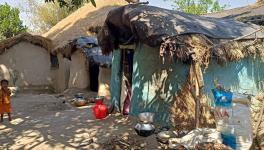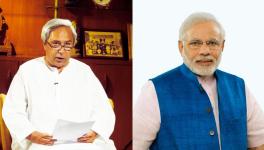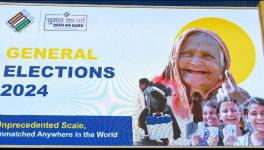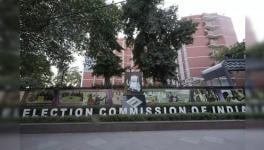Is Modi's Nepal Visit For Domestic Political Gains or to Repair Broken Ties?
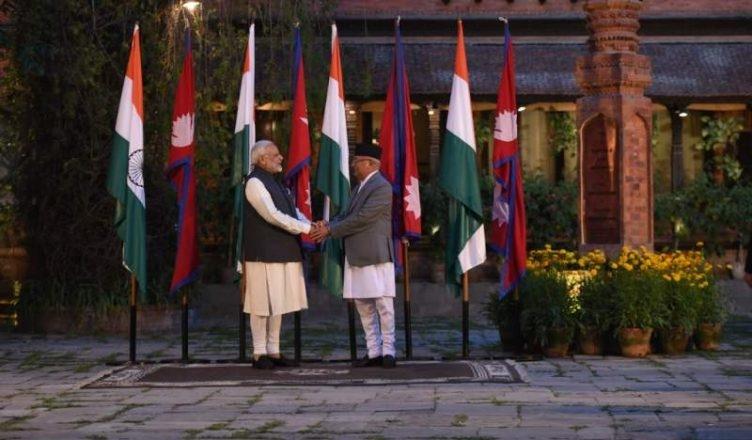
Image Courtesy: The Day After
Indian Prime Minister Narendra Modi landed in Nepal on Friday as a part of a two-day visit to the Himalayan republic. This is his second visit to Nepal since he became the PM and the first visit since the blockade. Playing to the gallery in India on Nepal's former status as the Hindu Kingdom, Modi adopted the religious pilgrim role before getting down to trade and diplomacy. However, a considerable section of the Nepali youth is sceptical of India's intentions, particularly after the border blockade. Apart from an attempt to mend fractured ties with Nepal, Modi's visit appears to have been interpreted in several ways by the Nepalese press. While the temple run has been interpreted as pandering to the Karnataka elections, the talk of developments regarding transit and hydro-power has been perceived by the press as competing with China in these sectors.
The Nepalese youth, as well as a political party, had planned protests against Modi's visit and demanded a formal apology for the blockade. The blockade, though never owned up to by India, came after the devastating twin Gorkha Earthquakes that had rendered so many homeless. While Nepal was busy trying to rebuild, the Constituent Assembly passed the country's first Republican Constitution. India was sore that their government was not consulted before the Constitution was passed. The result was an unofficial blockade accompanied by protests in the Terai over the manner in which the provinces were created. The government in Kathmandu has instead deployed its police forces to prevent any disruptions to the visit. 30 people have been detained in this regard, and banners demanding an apology have been removed by the police forces.
What most may not realise is that the blockade came just before Dasain/Tihar, the most important celebration for the Nepalese community irrespective of where they reside. Due to the fuel shortages, many were unable to return home for the festival. The shortage of consumer goods also compounded the dampened atmosphere at a time when people repaint their homes and buy new clothes. The foreign policy pundits in India may have thought that the anger would be directed against the government who then would be compelled to kowtow to Delhi's wishes. However, K P Oli, who was then the Prime Minister, stood his ground and left for Beijing where he signed as many as 10 agreements with the Chinese government. The agreements included allowing Nepal to use Chinese ports, extending rail and road connectivity to the country from the north, as well as delivering petroleum products. It is highly unlikely that India would ever tender any apology for the blockade, formal or otherwise.
The views of the Nepalese press has identified several issues that India and Nepal ought to discuss. The Rising Nepal has identified the issue of inundation in the Terai due to dams built on the Indian side of the border, as well as issues like the trade deficit, the unequal treaty of 1950, and the misbehaviour of Indian border guards (SSB), that ought to be discussed. The Nepali Times also took a position on the trade deficit between the two countries. An earlier opinion piece, written during K P Oli's India visit, raised the issue of recruitment into the Indian army. The article was written by a former Major of Nepalese citizenship who had served in the Indian army. He was quite unequivocally opposed to continuing the practice. However, the common thread in all the articles carried by the Nepalese press indicated a desire to be treated as an equal sovereign country, and not as a vassal state.
The Nepali Times criticised Modi's temple run as an act done to further domestic political interests in Karnataka. Modi had first landed in Janakpur in the Terai region of Nepal and former capital of Mithila before proceeding to Kathmandu. Here he visited the Janaki temple (a temple to Sita from the Ramayana), after which he pledged a financial assistance of Rs 1 billion for Janakpur's development. He then went to Mustang and visited the Muktinath temple after which he returned to Kathmandu to visit the Pashupatinath temple. A humour column in the Nepali Times echoed this sentiment as well as taking digs at the Nepalese authorities for undertaking public works only before official visits.
What however must be highlighted in this visit is the 'development' side of the visit. The two PMs remotely laid the foundation stone for Arun III, a 900MW project being built in eastern Nepal by Satluj Jal Vidyut Nigam, an Indian public sector undertaking. Nepal will be exporting 78% of the electricity generated to India, depriving the country of much-needed power for 'development'. Ironically, this would only enable diesel generators to proliferate at a greater pace, driving up Nepal's energy dependency, which presumably will be filled by Indian imports. Modi has pushed the project referring to 'waterways' and riverine trade which would link Nepal to the Bay of Bengal, thus ending Nepal's 'landlocked' status. However, some feel the talk of waterways is only a ruse to ensure that Nepal does not demand compensation for inundation.
The new push for rebuilding ties between the two countries after PM Oli's visit is probably aimed at countering China's investments in Nepal. Chinese investments in Nepal began well before the blockade of 2015. In 2014, China became Nepal's biggest investor. In 2017, China had invested around $ 80 million in Nepal, which constituted around 60% of total foreign investments. India had not invested even half the amount. China and Nepal have also been expanding people to people contacts – something India believes to be its private domain – early this year Chinese tourists outstripped Indian visitors.
It is clear that there are multiple layers involved in the recent visit. The symbolism of visiting religious sites is not lost. The fear of Chinese investment is one that has been brought about by India's own actions in the Himalayan country. The Chinese, for their part, have not wished to be used against India by Nepal either. However, the strategic security mindset in India will be difficult to shake-off unless the two countries actually put their heads together and formulate an equal and reciprocal treaty.
Get the latest reports & analysis with people's perspective on Protests, movements & deep analytical videos, discussions of the current affairs in your Telegram app. Subscribe to NewsClick's Telegram channel & get Real-Time updates on stories, as they get published on our website.












